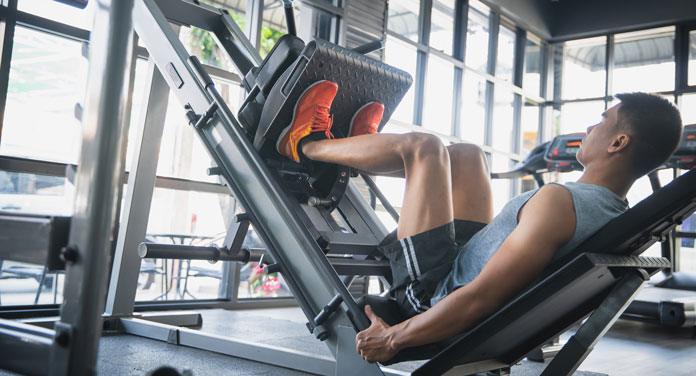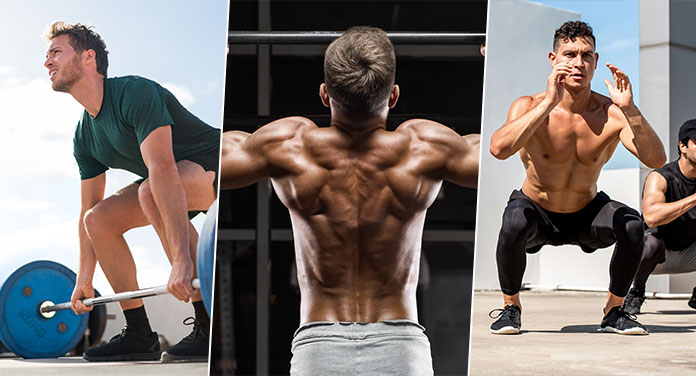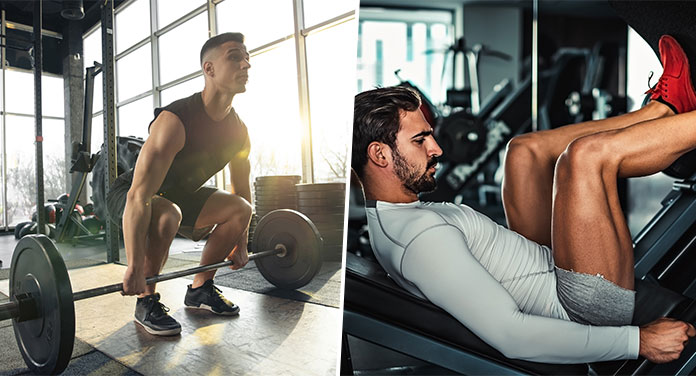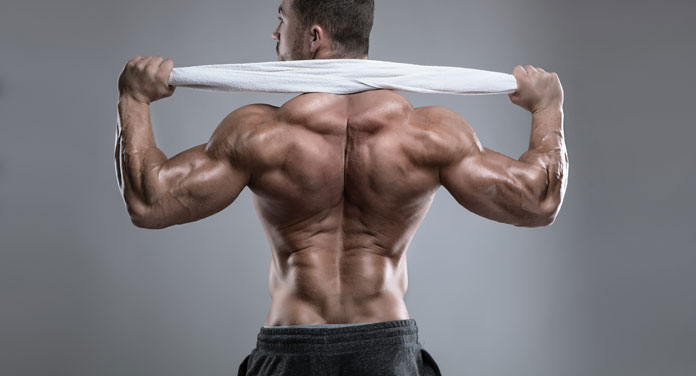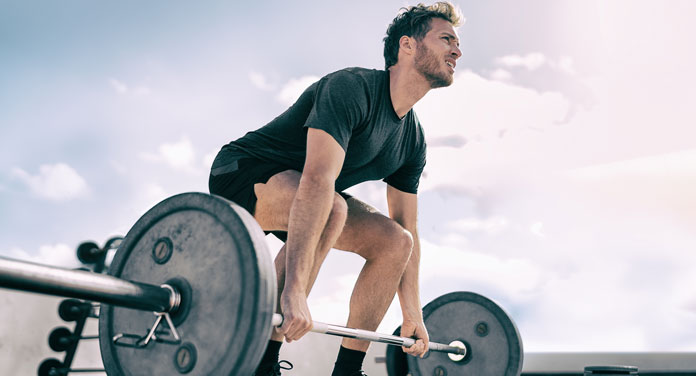Training Legs At Home ❚█══█❚ About the usefulness of leg training – why leg training is so important to us. If you ask enthusiastic gym-goers about their favorite training day, they usually answer with chest or back training.
Leg training is rarely mentioned in this context. Nevertheless, training the legs is also part of any balanced training plan. That’s why we show you how you can train your legs at home.
The fact that the so-called “leg day” should not be skipped or avoided during fitness training is no longer news in bodybuilding circles. Slogans like ” Never skip leg day ” are the order of the day here and this is certainly justified. Because leg training is more effective than many people might think.
If the leg training is balanced and the execution is carried out correctly, this can quickly lead to physical success. The training of the legs is the basic requirement for the effective training of other muscle groups. Because the most important muscle groups of the body are also addressed during leg training.
The following are particularly stressed: Adductor and calf muscles, buttock muscles, and thigh muscles. Each of these muscle groups takes on important tasks in the movement of the gait system and should therefore not be neglected.
But the same applies here: The prerequisite for optimal leg training is only given if the exercises are selected in a targeted manner and executed properly.
Benefits Of Regular And Targeted Leg Training
Your leg training stimulates the release of hormones that are responsible for melting your leg fat and allowing your muscles to continue to build up – your muscles grow. It has been proven that the body releases the most growth hormones during leg training. It doesn’t matter if you train your legs in the gym or if you prefer to train your legs at home.
The release of growth hormones ensures that your body builds more muscles throughout the body – not just specifically on the legs. Leg training should always be viewed as a full-body workout due to the heavy strain on different muscle groups. The positive side effect: You always train your basic physical tension when you start leg training.
Because your muscles need oxygen during training and this results in increased energy consumption, more calories are of course burned at the same time. This consumption of calories continues during leg training even after training. This is known in professional circles as the “ afterburn effect ” – your muscles work even though you are no longer using them intensively.
In addition to the effect of burning fat, training the legs is also a useful element in any training plan for the posture of the body: by improving the basic posture (straight, more upright walk thanks to more developed muscles), the stomach appears flatter.
In addition, leg training makes sense from the point of view of physical health: In the course of your training, your body releases more and more insulin. Insulin ensures that your body’s metabolism keeps going and helps you lose weight by maintaining an almost constant blood sugar level.
Why Men In Particular Should Train Their Leg Muscles?
Men often tend to skip leg training because their optical focus for their fitness training is on the upper part of the body (building a six-pack, well-trained upper arms, and a trained back).
Many forget that the so-called stork leg syndrome: Often, in the course of excessive training of the upper body, a very slim and skinny lower body develops, which is not only ugly to look at but is also not recommended for health reasons (muscular imbalances) and the postural apparatus can harm.
Train legs at home – How to get the most out of your leg muscles without going to the gym
In order to be able to train legs at home, you don’t necessarily need heavy equipment or weights to support your training. Therefore, we have listed a few ways below that you can use to train your legs without a gym:
SQUATS
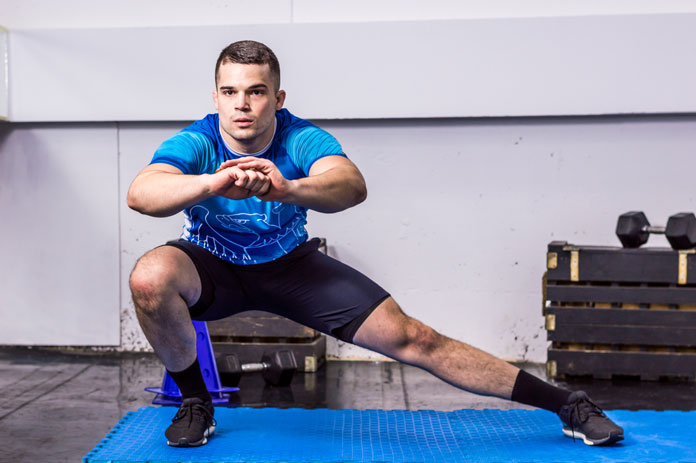
Squats are probably the best-known classic among the well-known leg exercises to train legs at home. Of course, you can do this type of exercise anywhere. Basically, the starting position should be taken from a straight and upright position.
The feet are parallel to each other, but hip-width apart. From this position, bend your knees and then straighten them again. Please make sure that the back is in a relatively stretched position and does not hunch over. One way to intensify this exercise is to do a small modification:
JUMP SQUAT: In this form of squat, you assume the pose described above as if you were about to do a regular squat. Instead of straightening after the bending process, you jump up from the bent position. After a few repetitions, your muscles will burn.
COSSACK SQUAT: A slightly more flexible hip is required for this exercise. The starting position, unlike the usual squat, is a slightly wider stance. The weight is shifted to just one leg and only that leg is bent (squats), the other leg is stretched out to the side. You can straighten yourself up by straightening the bent leg again. Of course, you have to repeat this exercise for both sides of your legs.
BULGARIAN SPLIT SQUAT: You need a chair for this. Now turn your back to the chair and place one foot on the seat. The second leg on the floor now jumps forward a few inches until the position feels comfortable. From this position, bend the leg that is on the floor to crouch.
LUNGES
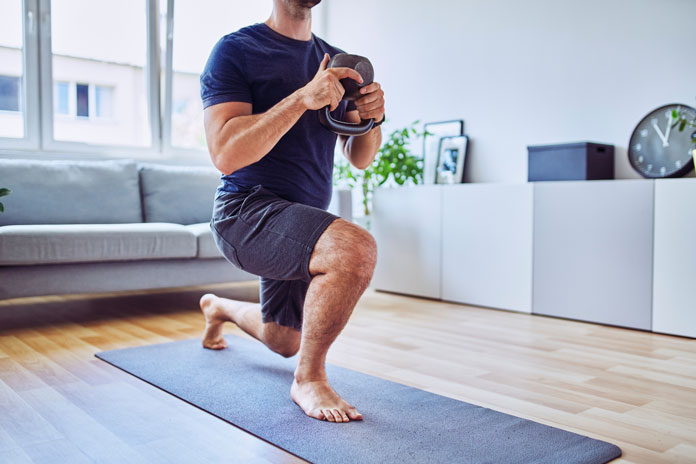
Exercising legs at home made easy: To assume the basic posture for performing a lunge, an upright, standing basic position is the be-all and end-all. One leg (no matter which one) now takes a wide (lunge) step forward. In the next step, the leg in front is slowly bent before it then resumes the basic position. As with all exercises, repetition is key.
There are also variations of the exercise for the lunges that intensify the training. A possible example:
LUNGE WITH JUMP: Just like with squats, jumps can be easily integrated into the training of the legs when performing lunges. To do this, do the exercise as described above. From the bend, you jump up and switch the leg in front for the one behind in the jump. The faster you make your alternating jumps, the more intensive and strenuous the training will be for you.
MORE LEG EXERCISE
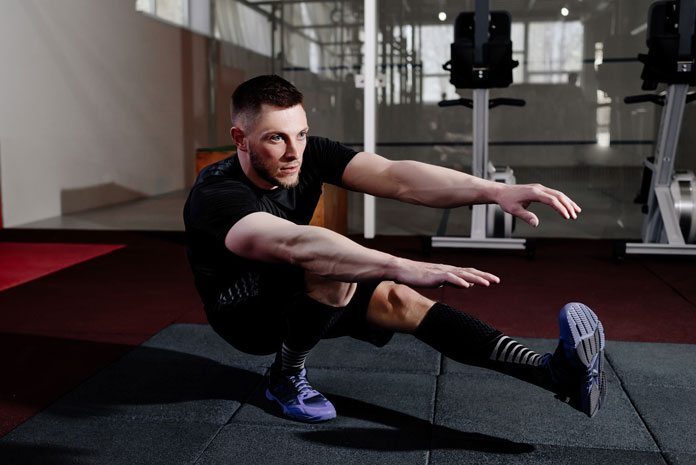
BUCKLE LEGS: In this exercise, you lie on your back on the floor or on a suitable sports surface. Bend your legs, your hands are flat with the palms on the floor. From this position, stretch your legs forward as far as you can (without resting them on the floor) and pull them back towards you.
Challenging Training Design For Advanced Users To Be Able To Train Legs At Home
We have also put together a short selection of tips for advanced sports enthusiasts to make training at home even more intensive.
ADVANCED SQUATS: When it comes to squats, the training variation called PISTOL SQUAT is particularly useful. Also with this exercise, you start from the upright and standing position. Extend one leg forward and squat, keeping the front (extended) leg extended and not touching the floor. From this position, you straighten up again, repeat the exercise, and then swap the two sides of your legs for each other.
In principle, of course, it applies to all the exercises mentioned that each exercise can be intensified by using weights (e.g. on the wrists and ankles). What is important, however, is that you will achieve greater success in training if you perform the exercises correctly than if you use weights and therefore only perform the exercise incorrectly. Therefore, please only use weights if you are really sure about performing the exercise. This not only helps you to improve your training success but also protects you from possible injuries to muscles or joints.
Training Myths You Better Erase From Your Mind
Unfortunately, it happens from time to time that rumors about various training devices and exercises have been established due to a large number of opinions. We picked out 3 myths and clarify which rumors you better not believe.
Myth 1: Leg Extensions On The Machine At The Gym Are Harmful
Here the motto clearly applies: “The amount makes it harmful!” The forces acting during the exercise naturally put a strain on the knee and excessive training and untrained entry into training is certainly not good for your health.
It is therefore important: As a beginner, each exercise should only be increased slowly and not tackled with excessive enthusiasm. This not only damages your training success but also your health in the long run.
With normal training sessions and following this advice, you can still leave this exercise in your training plan without hesitation. Because the knee joint also learns like a muscle and can get used to the forces at work, provided the joint is healthy.
Myth 2: Fat Is Only Broken Down In The Trained Muscle Group
This statement is not at all true. During training, you cannot regulate the region in which your body should break down fat. Fat loss occurs throughout the body and only if there is a calorie deficit at the same time.
Myth 3: Women Should Train Differently Than Men
There is absolutely no reason for this. Both men and women build muscle and fat in the same way. However, women (due to the laws of nature) do not become as muscular as men. So don’t worry: women can also train their upper body without looking like the Hulk in the end.
Conclusion
As an athlete, you will achieve better results if you integrate the training of your legs into your training plan and routines. This allows you to influence the optimal growth of your muscle groups and get closer to your desired training success more quickly. Also from an optical point of view:
A holistically trained body is ALWAYS more beautiful to look at than the half-finished product.

